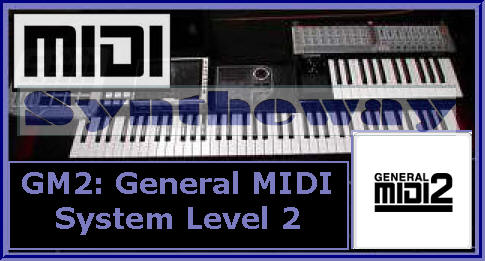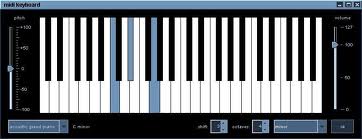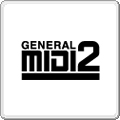|

General MIDI
1 made great strides in the music industry by providing a
platform for compatibility between device manufacturers
and content providers. Still, by 1999 many manufacturers
felt there needed to be additional functionality.
General
MIDI 2 (GM2) is
a group of extensions made to General MIDI 1, which
increases both the number of available sounds and the
amount of control available for sound editing and musical
performance. All GM2 devices are also fully compatible
with General MIDI 1.
New MIDI Messages
To
support new features in GM2 devices, the MIDI
specification was also extended with numerous new control
messages, include MIDI
Tuning, Controllers, RPNs, and
Universal System Exclusive Messages. Of particular
significance are the new Universal System Exclusive
Messages, including Controller Destination Setting,
Key-Based Instrument Controllers, Global Parameter
Control, and Master Fine/Coarse Tuning.
General
MIDI is an industry-wide set of specifications for sound
sources that allow music data to be created regardless of
manufacturer or specific models. General MIDI defines the
minimum number of voices that should be supported, the
MIDI messages that should be recognized, which sounds
correspond to which Program Change numbers, and the layout
of rhythm sounds on the keyboard. The General MIDI logo on
a sound source indicates compatibility with song data
which also carries the General MIDI logo.General MIDI is
an industry-wide set of specifications for sound sources
that allow music data to be created regardless of
manufacturer or specific models. General MIDI defines the
minimum number of voices that should be supported, the
MIDI messages that should be recognized, which sounds
correspond to which Program Change numbers, and the layout
of rhythm sounds on the keyboard. The General MIDI logo on
a sound source indicates compatibility with song data
which also carries the General MIDI logo.
GM2
(General MIDI System Level 2) is a set of standards for
editing voices not covered by GM1. GM2 also defines the
operation specifications of effects and other elements in
detail, and enables more sophisticated performance
expression and greater compatibility, by expanding range
of voices.

 |

